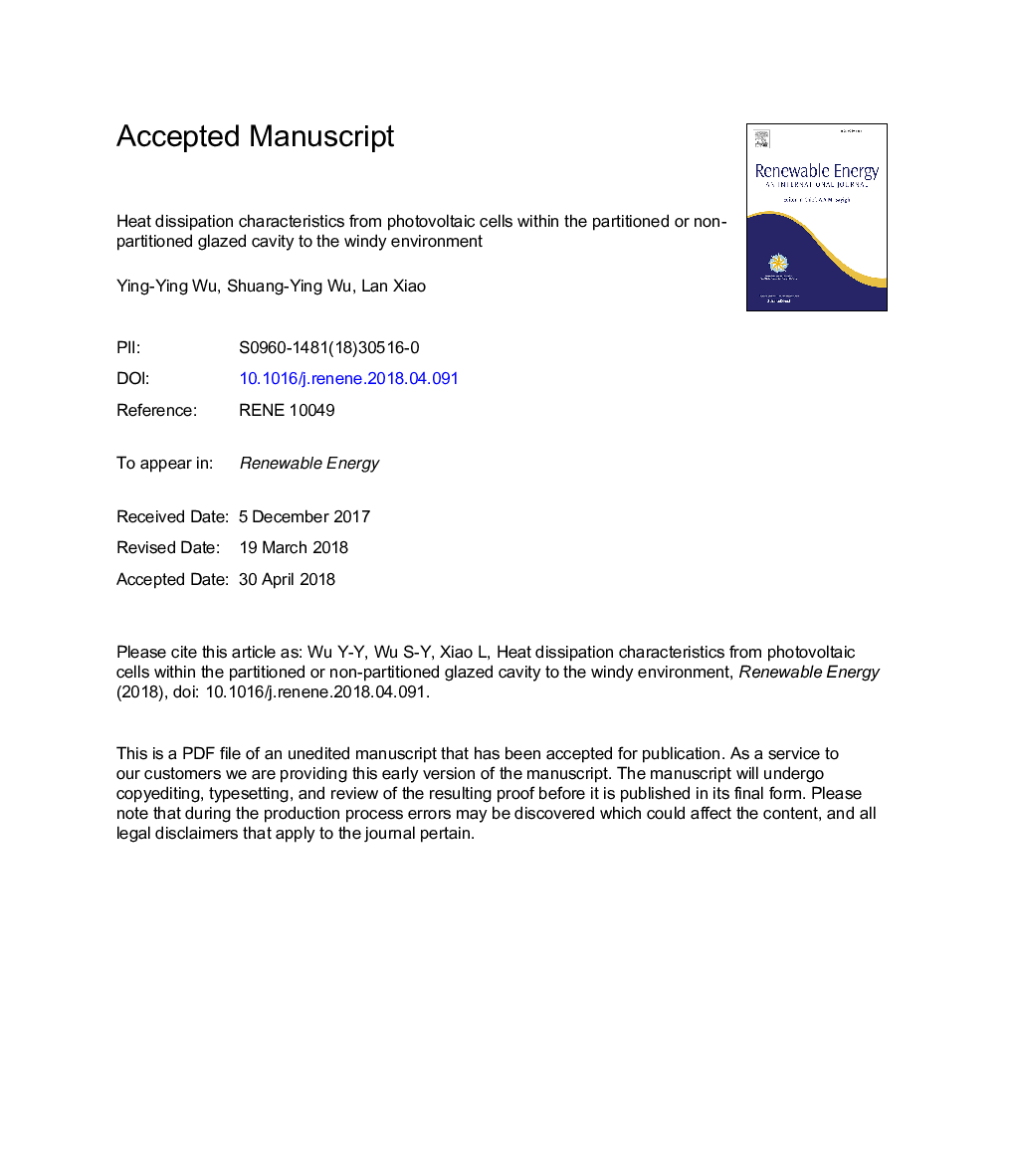| Article ID | Journal | Published Year | Pages | File Type |
|---|---|---|---|---|
| 6764140 | Renewable Energy | 2018 | 35 Pages |
Abstract
A numerical model, whose computation domain contains the glazed shallow cavity and surrounding wind field, has been proposed to investigate the characteristics of heat dissipation from photovoltaic cells within the glazed cavity to the windy environment. To reflect the actual working characteristics, both the photoelectric conversion characteristic and surface radiation were considered. The temperature distribution of PV cells particularly the hot spot temperature has been displayed to reveal the effect of tilt angle (α) and wind velocity (v). Then a thorough analysis was presented in virtue of visualized results, convection Nusselt number inside the cavity (Nucin) and total heat loss coefficient (Ut). Meanwhile, efforts were also performed to compare the partitioned and non-partitioned cavities. Results show that hot spot position at αâ¯=â¯15° has the obvious diversity due to the variation of wind velocity. Unlike the increased Nucin, total heat loss coefficient of PV cells at vâ¯=â¯5â¯m/s decreases when the tilt angle shifts from 15° to 30°. Further, it is found that hot spot temperature difference between the three cells shrinks in the partitioned cavity, and the partition indeed contributes to the improvement of PV cells temperature uniformity, which plays a positive role in the protection of PV cell property.
Related Topics
Physical Sciences and Engineering
Energy
Renewable Energy, Sustainability and the Environment
Authors
Ying-Ying Wu, Shuang-Ying Wu, Lan Xiao,
